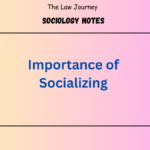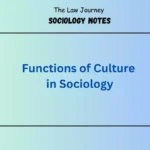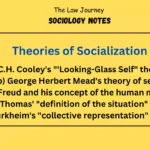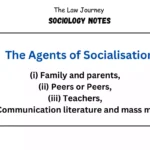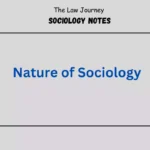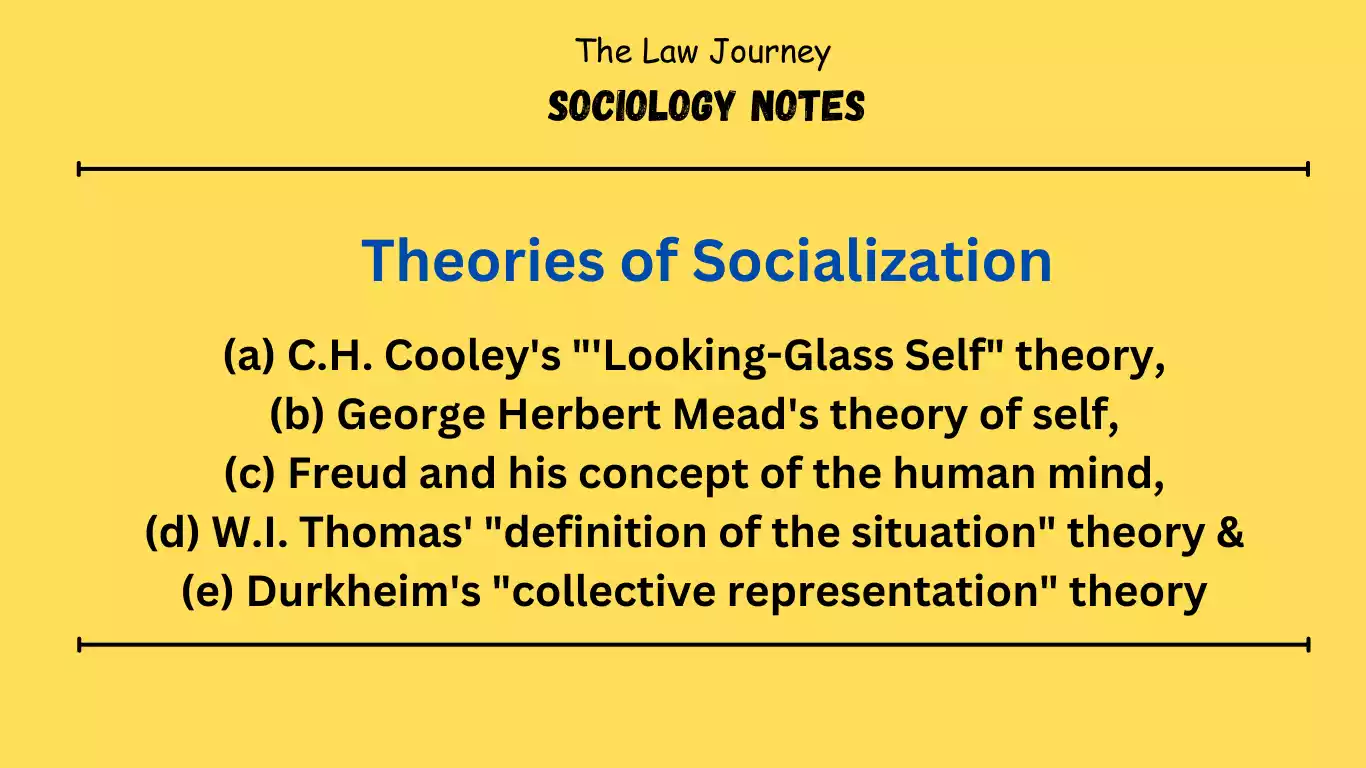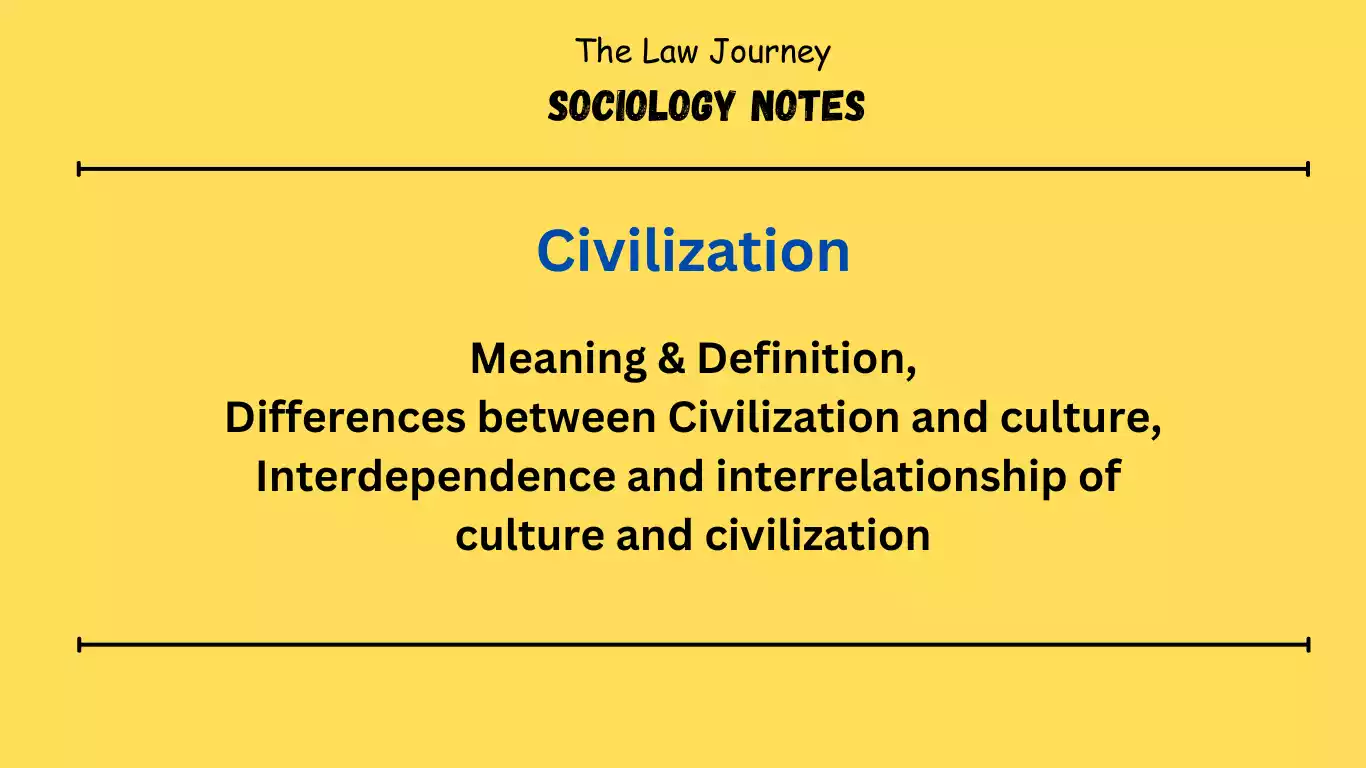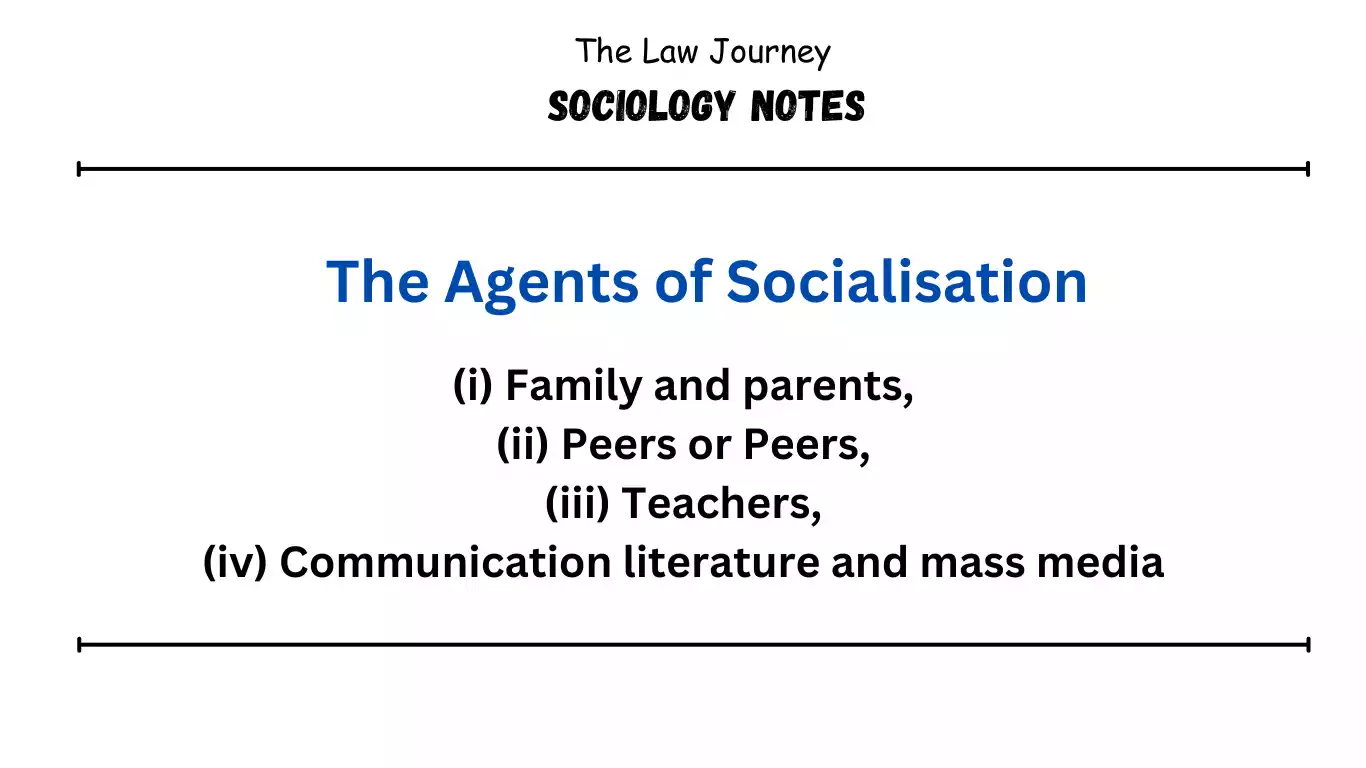Followings are the main theories of Socialization ;
(a) C.H. Cooley’s “‘Looking-Glass Self” theory | Theories of Socialization
The “self” can be seen as an internalized object that represents a person’s personality. Where does this self come from? Are we born with it? Should we learn to recognize and know that? Is this something individuals take with them when facing society? Or is it something he receives from society as a gift of conflict? Charles Horton Cooley, America’s leading new social psychologist, made several sustained attempts to find answers to these questions.
C.H. Cooley presented us with his two main hypotheses: (i) the mind is social, and (ii) society is mental. Of the two, the former impressed many sociologists. In Social Organization, he writes, Self and society are twins, we know one as directly as the other, and the idea of a separate and independent self is an illusion.” I am writing. While observing his children, he came to the conclusion that the very concept ofself” or “ego”, i.e., I, can only arise in relationships with other people.
There are three main elements in Looking-Glass.
Self-Cooley argued that self and society are two sides of the same coin. Our ideas, loyalties, attitudes, and perspectives come from others. Cooley is one of the means of communication called mirror self. According to him, self-image and self-attitude are developed by imagining what others think of us in a kind of “mirror” process.
There seem to be three main components to this type of self-image:
(i) Thoughts about how we appear to others.
(ii) the imagination of his judgment of this (imaginary) phenomenon;
(iii) a type of self-feeling such as pride or humiliation;
As Cooley argues in his book Human Nature and Social Order, individuals develop ideas about themselves through contact with major groups, especially families. This happens by noticing their attitude towards him. In other words, the child understands what he thinks about himself and then, through the thoughts that others think about him, understands what kind of person he is. Cooley therefore called the child’s idea of himself the “mirror self.” Children perceive themselves to be better or worse off to varying degrees depending on how others treat them.
Therefore, a child’s self-image may be influenced by the types of names given to him by his family and friends. A child who is called an “angel” by his mother has a different idea of himself than a child who is called a “villain.” The “Glass Self” assures the child which aspects of the role he has assumed are to be praised and which are to be condemned.
What is acceptable to others and what is not. Usually people have their own attitudes towards and adopt social roles. The child first tries this out on others, then takes it on himself, and when the person becomes an object” of himself, a self arises. He is now able to have the same opinion about himself that he believes others have. The moral order that governs human society is highly dependent on theGlass Self.”
Therefore, it is clear that we tend to see ourselves through the eyes of others. Depending on the nature and weight of this “other” (the person we imagine ourselves in our minds), we experience a variety of emotions. We are ashamed to appear evasive in front of honest people. Cowardly before a brave man, vulgar before an educated man, greedy before a generous man, etc.
We may be proud of our behavior to one person, but we may be embarrassed to express it to another. “I’m not who I think I am, and I’m not who you think I am. I’m who I think I am.” I think. Cooley concludes that “the self is social, and without society there would be no self-consciousness.” The “Glass Self” affects everyone’s daily life.
(b) George Herbert Mead’s theory of self | Theories of Socialization
G.H. Mead, a famous philosopher and psychologist at the University of Chicago, also believed, like Cooley, that society is the determinant of an individual’s socialization. He agreed with Cooley that the “self” is social. Mead explained: We become aware of ourselves primarily through interaction. It means that individuals learn more about themselves through so-called “role play.”
role-playing game”. Mead stated that individuals play the role of others in order to form an image of themselves. By seeing themselves as others see themselves, one actually puts themselves in the other person’s shoes and imagines how they would react. This is “role playing”. The “other” could be his parents, close friends, and ultimately society as a whole.
As the child grows up, it is observed that he behaves towards dolls and toys in the same way that his mother and other family members behaved towards him. The child assumes the role of another person in the play. Through role-playing, in which children play the roles of mothers, fathers, and others, children learn to see themselves objectively through the eyes of others. Some of these “others” are “more important”.
significant other
A newborn child has a desire for gratification, such as food and clothing. The mother meets these needs, and the child becomes dependent on her and becomes emotionally “identified” with her. However, over time, the child distances himself from his mother and realizes that he plays a subordinate role compared to his mother’s superior role. Then the child will understand the role of the father. He distinguishes between father and mother and then integrates them into the social system.
(c) Freud and his concept of the human mind | Theories of Socialization
Sigmund Freud was an Austrian psychiatrist and the founder of psychoanalysis. Much of Freud’s work is more about the “human psyche” than the process of socialization. Although Freud did not propose a theory of socialization per se, his ideas did much to clarify this process. This can be determined by understanding his analysis of the human mind.
Freud divided the human mind into three areas.
They are:
(1) Id: The ‘id’ is concerned only with satisfying the animal impulses of man. (i) Ego: The ‘ego’ serves as the mediator between desire and action. It represses the urges of the ‘id’ when necessary.
(iii) Super Ego: The ‘superego always holds up the behaviour norms of society. It provides the ‘ego’ the idea of moral and immoral and this in turn intervenes with the id.
In Freud’s analysis of the human mind, the concept of the “super ego” is of great sociological importance. It is also important for learning socialization. According to Freud, an individual’s superego reflects his parents’ standards of right and wrong. Individuals incorporate these into their personality by identifying with their parents.
The parental standard is none other than the society in which the person currently lives, or one of its subgroups. As a result, in the process of socialization, the child logically adopts society’s behavioral norms through the super ego.
(d) W.I. Thomas’ “definition of the situation” theory | Theories of Socialization
W. I. Thomas’ views on the socialization process can be understood through the analysis of his “definition of the situation” theory. According to Thomas, the child’s situation is already determined for him. The rules by which he must behave are determined by the group into which he is born. The child is not able to act according to his own whims and ideas. He must act according to the group’s expectations and reconcile his wishes with the group’s wishes.
Group wishes and expectations always require self-control, order, discipline, and self-sacrifice on the part of children. There may be some discrepancy between the child’s wishes and the group’s wishes. Usually, but not always, the group wins in such conflicts. Thomas vividly described this situation in his work “The Unadjusted Girl”.
Therefore, according to Thomas, conscious action requires an evaluation of the situation in which the person finds himself. Once the situation is defined for him, he will be able to act appropriately in it in normal life. His role will also be revealed. Thomas pointed out that during infancy, the infant’s situation is defined by the mother and other members. Parents define situations through language and other symbols and printed materials. Parents can give instructions to children to correct their behavior.
(e) Durkheim’s “collective representation” theory | Theories of Socialization
Durkheim’s theory of “collective representations” sheds light on the study of socialization processes. In his socialization theory, Durkheim argues that individuals become socialized by adopting group behaviors. By “collective expression” he meant the totality of group experiences, ideas, and ideals on which individuals unconsciously depend in their thoughts, attitudes, and actions.
For Durkheim, collective expressions are objects or elements of social value. These objects are symbolic products that are mutually owned and mutually transmitted.
Durkheim explained that “collective expression” has great power because it is created and developed collectively. This means that collective expressions and social values are the product of collective action. Therefore, they are persuasive and coercive. For example, a national flag is a political expression. Scriptures are religious expressions, etc. Durkheim stated that these collective representations and social values directly or indirectly shape the newborn’s personality and behavior.
According to Durkheim, individuals improve according to the standards of the group. The collective experience of the group gives the individual the necessary direction in learning correct behavior. In this respect, Durkheim’s collective expression is similar to Sumner’s concept of folk customs and customs. Durkheim believed that “collective expression is an autonomous entity, completely independent of individuals.”
He proposed the theory of “collective consciousness” and “collective mind,” which he believed existed independently of individual consciousness. This part of Durkheim’s doctrine has been heavily criticized and is currently rejected by many American sociologists.
Related Post | Theories of Socialization
- moot court memorial maker
- RTI notes
- Political Notes
- Legal History Notes
- Law of Torts notes
- law project maker
Reference Books | Theories of Socialization
- C.N. Shankar Rao – Principle of sociology with an introduction to social thoughts
- Social Change in Modern India by M N Srinivas
- Introduction to Sociology by Anthony Giddens
- A Dictionary of Sociology by John Scott
- Sociological Theory by George Ritzer
- Handbook of Indian Sociology by Veena Das







